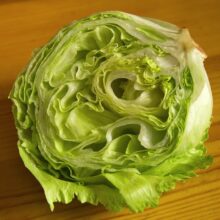How to Lose Weight by Dieting Alone: A Step-by-Step Guide
Dieting alone can be a challenging and frustrating experience, especially when you’re unsure of how to approach it. However, with a clear plan and dedication, you can achieve significant weight loss results. In this article, we’ll provide you with a step-by-step guide on how to lose weight by dieting alone, covering the basics, tips, and best practices to help you succeed.
Step 1: Set Realistic Goals
Before starting your diet, it’s essential to set realistic goals. This will help you stay motivated and focused throughout the process. Define specific, measurable, achievable, relevant, and time-bound (SMART) goals, such as losing 10-15 pounds in 3-6 months. Make sure to write down your goals and track your progress to stay accountable.
Step 2: Identify Your Macronutrient Needs
To lose weight effectively, you need to understand your daily macronutrient needs. Calculate your individual caloric needs based on your age, gender, weight, and activity level. A general rule of thumb is to aim for a daily caloric intake that’s 500-1000 calories below your maintenance level. For example, if your maintenance caloric intake is 2000 calories, aim for 1500-1700 calories per day.
Step 3: Choose a Balanced Diet
Focus on a balanced diet that includes a variety of foods from all food groups. Aim for whole, unprocessed foods like vegetables, fruits, lean proteins, whole grains, and healthy fats. Avoid or reduce processed, high-sugar, and high-sodium foods. Eat at least 5 servings of fruits and vegetables daily, and choose lean protein sources like poultry, fish, and legumes.
Step 4: Portion Control is Key
Portion control is crucial when dieting alone. Use measuring cups or a food scale to measure your food portions. Eat slowly, savoring each bite, and stop when you’re satisfied, rather than stuffed. Avoid eating in front of screens or while doing other activities, and try to eat with family or friends to promote mindful eating.
Step 5: Hydrate Adequately
Dehydration can lead to false hunger pangs and decreased satiety. Drink at least 8-10 glasses of water per day, and avoid sugary drinks. Infused water or low-calorie juice is a great alternative to plain water, and you can also try herbal tea or low-calorie sparkling water for added flavor.
Step 6: Monitor Progress and Stay Accountable
Track your progress by weighing yourself weekly, taking body measurements, and monitoring changes in your clothing or appearance. Use a food diary or mobile app to log your food intake, and set reminders for meals and snacks to stay on track. Share your goals and progress with a friend or family member to stay accountable and motivated.
Step 7: Be Patient and Persistent
Losing weight by dieting alone takes time and patience. Don’t expect to see rapid results, and avoid fad diets or quick fixes that often lead to rebound weight gain. Celebrate small victories along the way, and don’t be too hard on yourself if you encounter setbacks – simply get back on track and move forward.
Conclusion
Losing weight by dieting alone requires dedication, patience, and persistence. By following these 7 steps, you’ll be well on your way to achieving your weight loss goals. Remember to set realistic goals, choose a balanced diet, practice portion control, hydrate adequately, monitor progress, and be patient and persistent. With the right mindset and approach, you can achieve sustainable weight loss results and enjoy a healthier, happier you.





